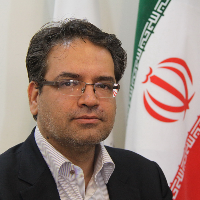Localizing Integrated Urban Regeneration of Historical Context of Islamic City
So far, insufficiency of fluency non-native patterns in urban planning system and reliance on imported versions in our urban planning, which has imposed heavy consequences on our organization city. Superficial imitation of the patterns and lack of inclusion of indigenous socio-cultural foundations, not only failed due to an intolerance to adapt with Iranian-Islamic identity of the city but also but sometimes incomplete or improper implementation of them, has created double dilemma. Glorious history of Islamic civilization is full of strong evidence to show that always Muslims with intelligence and interaction with other cultures can use positive approaches of the others, Of course, in this way the main source was the Qoran and the Prophet (PBUH) and the Ahlul Bayt method. Therefore, localization and using benefit of the positive achievements, in particular the successful experiences, it can be catalyst and facilitator to achieve a model of their own culture. In this context and to respond to the significant challenges of development and conservation issues in the context of historical Islamic cities ,in this study scrutinizes, integrated urban regeneration policy and according to the contextually logic and its components, introduced native model of integrated urban regeneration in the context of historical Islamic cities.
Obviously this issue is possible, after becoming today›s one-dimensional man and as a result imbalances in the structure of the city caused cultural gap and injection of indigenous component, only through recognition of the Islamic identity of the city and its components based on Islamic thought. Qualitative methods of this study, with descriptive-analytic approach, gathers information through using documentary. The main sources are the urban regeneration literature and the Book of God, Imams traditions, legacy of Islamic cities.Every religion can be clearly reflected in the construction of the physical, economic, social, cultural and geographical spaces which can be observed under the realm of religion. Islam binds importance and value of city to scale of its spirituality of the people. Therefore, Islamism of city depends on can present the principles and values that Word of God has defined to the Muslim community. A Islamic city is Islamic if its physical aspect is manifestation and expression of Islamic values for human life and the basis of the attributes of divine action; Absolutely in such this structure, unison of material and spiritual components to unity, in totality-unity in diversity- must be fulfilled; Such that human virtues such as justice, moral virtues for example honesty, safety and security and in general all religious good nesses are plentiful in the Islamic utopia and of course, in considering to physical aspect will not never neglect the virtues and somehow is going to be built in such spaces that have virtue and reminder for human. Meanwhile the urban context, both historical and new, is objective space as constituents of the Islamic city in association with intellectual and practical space follow the realization of a goal.
According to Islamic teachings, the ultimate goal of human is perfection and excellence that will not be possible unless we pay attention to God, therefore, in the Islamic urban planning all components must be noted and used to improve human. The deteriorated texture problems in the structure of our modern cities, not new and not fully solved and so far main part of this problem goes to the logic of policies that have been adopted. Nowadays, decision-makers face trouble because of lack of the pattern which adaptive to social, economic, and geographical attributes of country and rely on imported patterns. More patterns arising from the capitalist system that except their own interests, and not pursuing another target. It is clear that the adoption and use of global patterns not only is not required and pre assigned version for all cultures and nations, but also is not in many cases definitive. So it seems to achieve Islamic-Iranian model of progress, first, it should recognized basic principles of common pattern in all aspects of decision-making in solving problem and then be recognized main assumptions underlying them and adapted to the culture and conditions. Therefore, understanding the process of change and protection of them is key to integrated urban regeneration. In this study, Based on theoretical principles of Islamic city, model for integrated urban regeneration process in historical context are explained and localized, from this perspective lack of comprehensive theoretical mechanism for dealing with the deteriorated historical context in modern cities of our country will solved.
- حق عضویت دریافتی صرف حمایت از نشریات عضو و نگهداری، تکمیل و توسعه مگیران میشود.
- پرداخت حق اشتراک و دانلود مقالات اجازه بازنشر آن در سایر رسانههای چاپی و دیجیتال را به کاربر نمیدهد.


